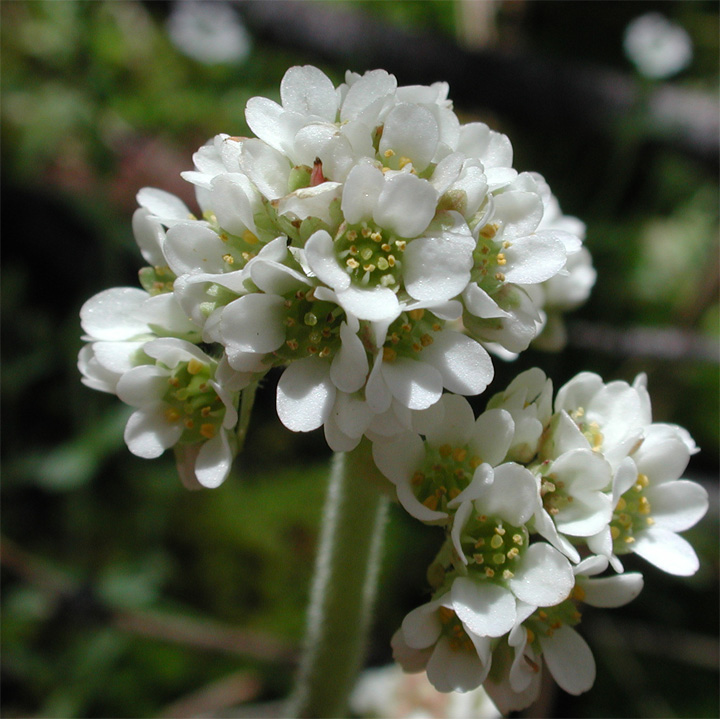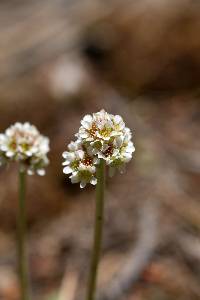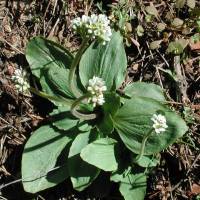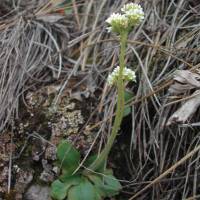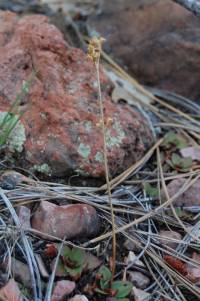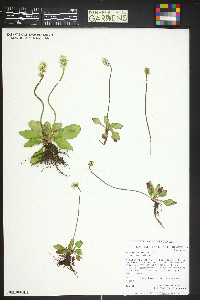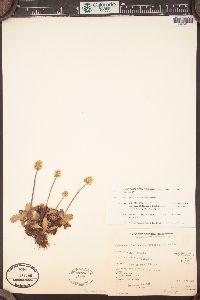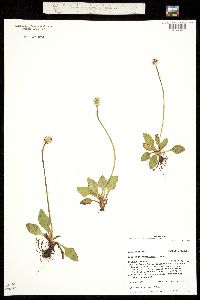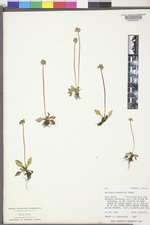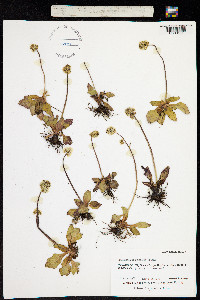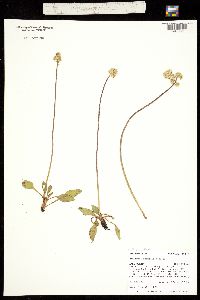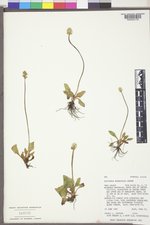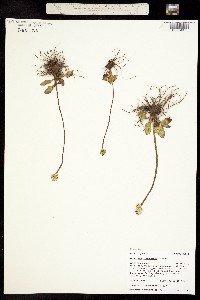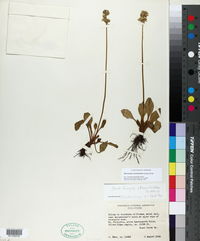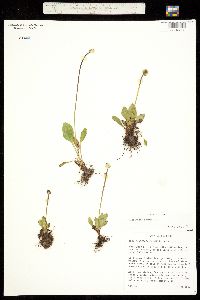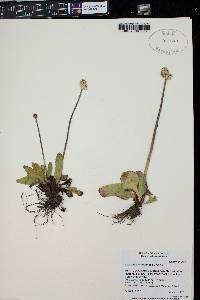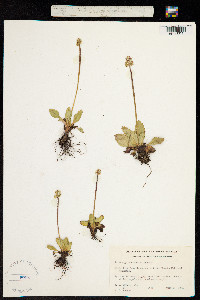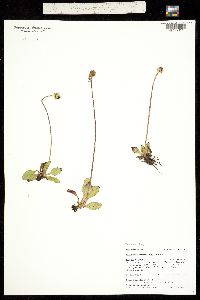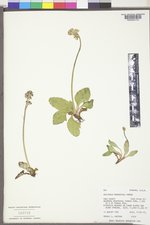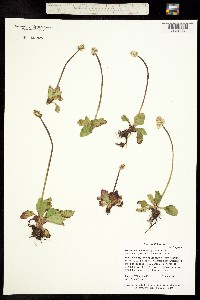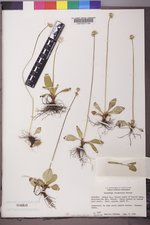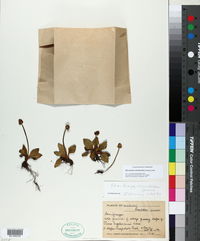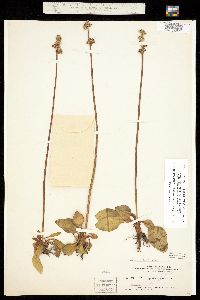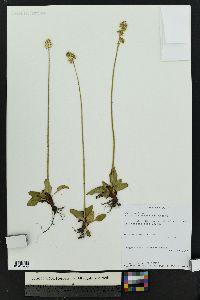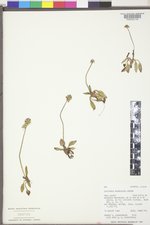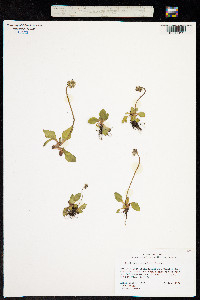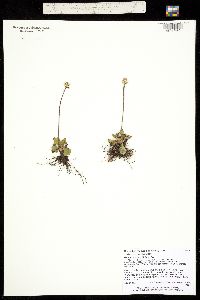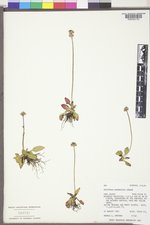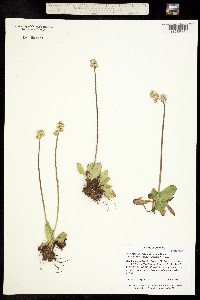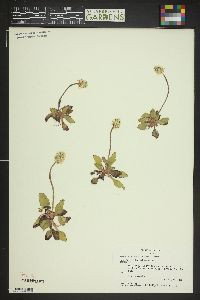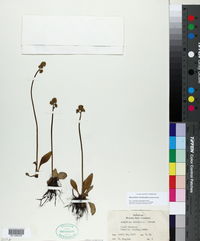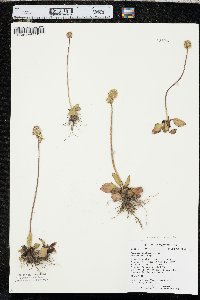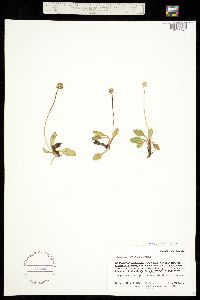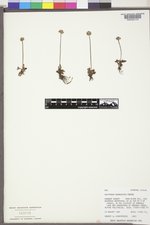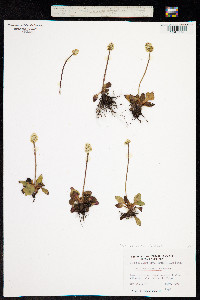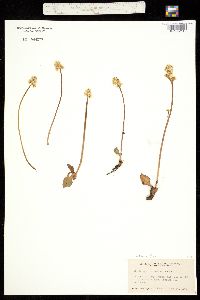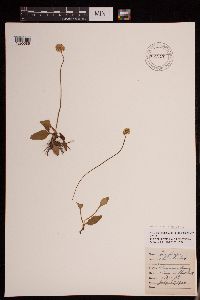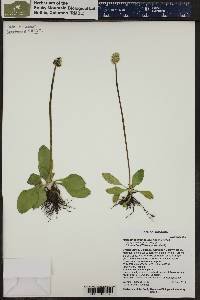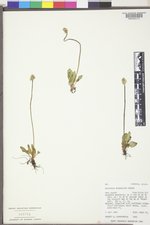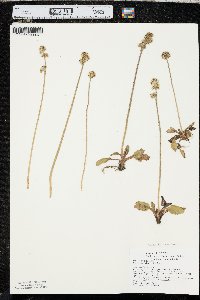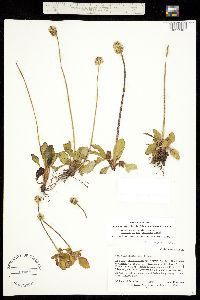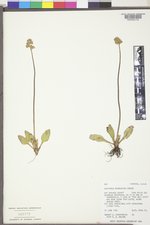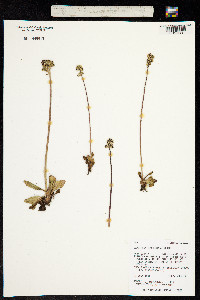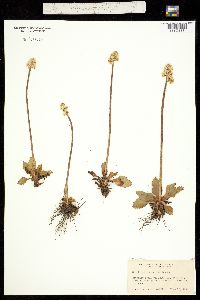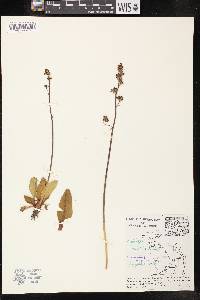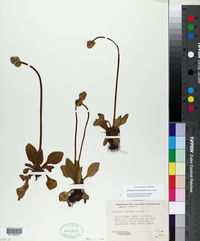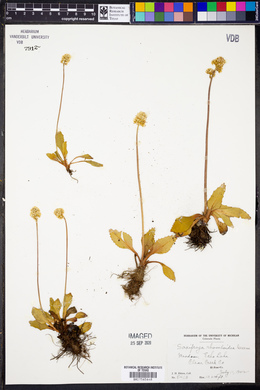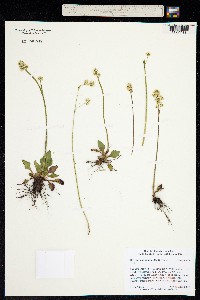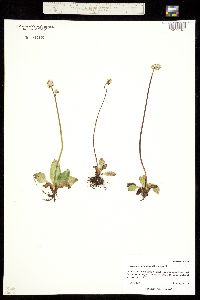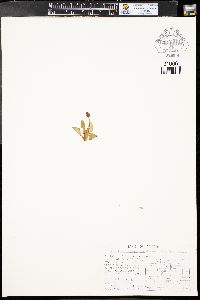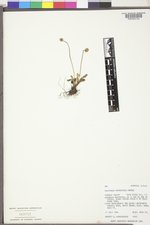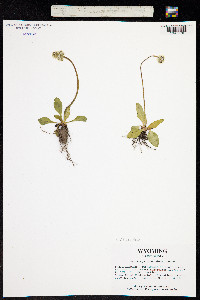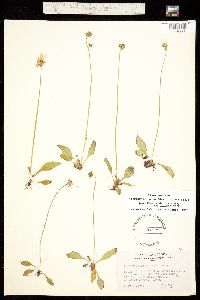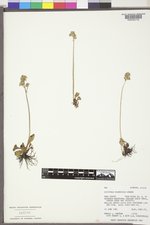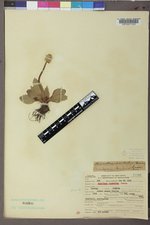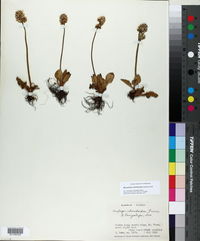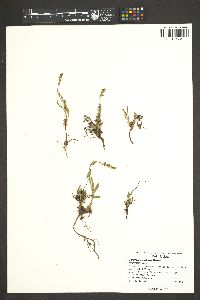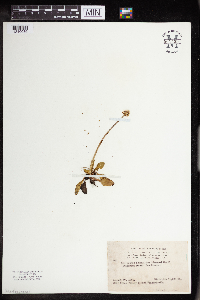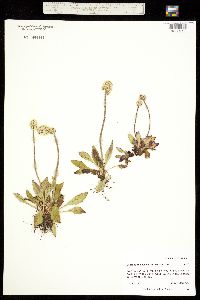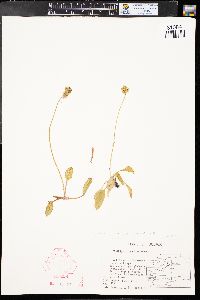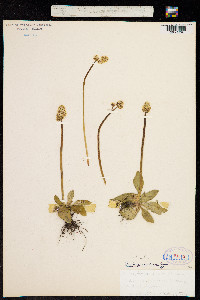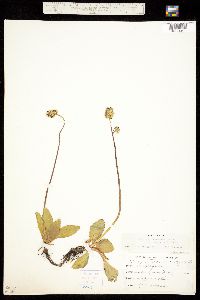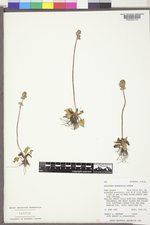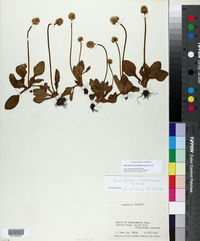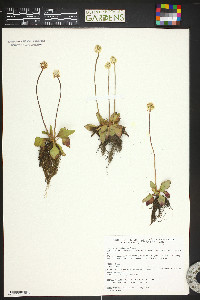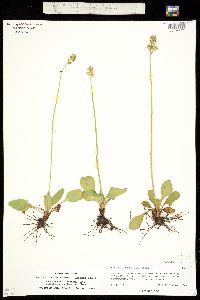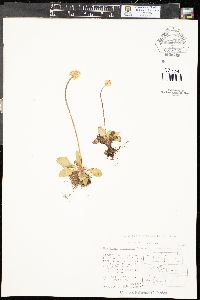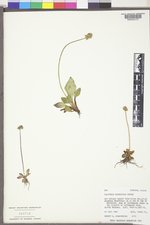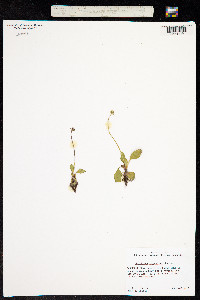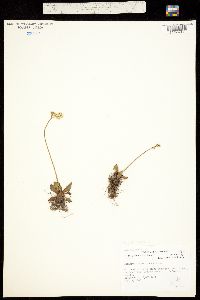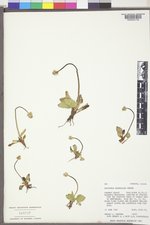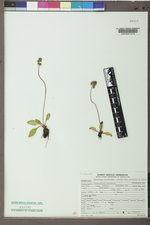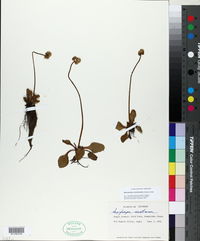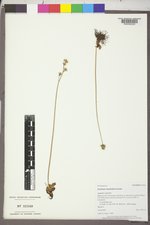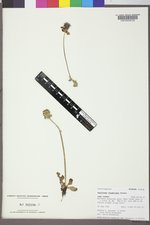Micranthes rhomboidea
|
|
|
|
Family: Saxifragaceae
Diamond-Leaf Pseudosaxifrage, more...diamondleaf saxifrage, diamond-leaf saxifrage
[Saxifraga rhomboidea Greene, moreSaxifraga rhomboidea var. interrupta Engl. & Irmsch., Saxifraga rhomboidea var. rhomboidea] |
Plants solitary or tufted, with bulbils on caudices. Leaves basal; petiole flattened, 1-3 cm; blade broadly ovate to triangular, 1-3 cm, fleshy, base attenuate, margins coarsely serrate, ciliate, surfaces sparsely to moderately tangled, reddish brown-hairy abaxially, glabrous adaxially. Inflorescences (5-)10-40-flowered, congested, ± glomerate or capitate thyrses, 4-20 cm, usually densely yellow- to cream-tipped stipitate-glandular. Flowers: sepals ascending, ovate; petals white, not spotted, oblong to elliptic, clawed, 2-4 mm, 1.5+ times as long as sepals; filaments linear, flattened; pistils connate to 1/2 their lengths; ovary inferior, appearing more superior in fruit. Capsules purple, folliclelike. 2n = 20, 38, 40, 56. Flowering late spring-summer. Subalpine and alpine meadows; 1500-4600 m; Ariz., Colo., Idaho, Mont., N.Mex., Utah, Wyo. Micranthesrhomboidea is somewhat polymorphic; variants have been given taxonomic designations with little consistency. The chromosome number variation needs thorough study, as in other species of Micranthes, because no obvious correlations with morphology or geographic distribution are known (B. L. Bethers 1973). Reports from Canada (Alberta, Saskatchewan) were rejected as misidentifications of M. occidentalis.
Plant: perennial herb Leaves: all basal; blades ovate to rhombic, 1-4 cm long, the base attenuate, the margin usually serrate-serrulate; petiole 1-4 cm long, flattened INFLORESCENCE: 3-30 cm tall, condensed into 1-3 (-7) glomerules, sometimes more open, covered with pale yellow-tipped, glandular hairs Flowers: more than 10; sepals erect, ovate, sometimes purple-tipped; petals 2-4 mm long, longer than sepals, elliptic to slightly obovate; filaments lanceolate; ovary at least half inferior in flower, more superior in fruit; nectaries disk-like Fruit: FRUITS 2(-3) valved; SEEDS smooth to ridged Misc: Alpine and subalpine meadows; above 1500 m (5000 ft); Apr-Aug Notes: CAUDEX simple, sometimes branched; bulblets 0 REFERENCES: Elvander, Patrick. 1992. Saxifragaceae. Ariz.-Nev. Acad. Sci. 26(1)2. General: Perennial, 2-30 cm tall; plants scapose, the flowering stem usually solitary, densely glandular-pubescent above; caudex simple, sometimes branched. Leaves: Basal, ovate-rhombic to lance-elliptic, 0.5-5.5 cm long, 0.3-3.4 cm wide, thick, usually glabrous above, pubescent with long, intertwined hairs beneath, margins serrate to crenate-dentate, densely ciliate, base attenuate; petiole 0.5-4.5 cm long. Flowers: Inflorescence a raceme, 3-9 flowered, finely glandular- pubescent; pedicels 0.5-4 mm long; hypanthium campanulate or hemispheric, 2-4.4 mm long; sepals 5, triangular, 0.5- 1.2 mm long; petals 5, ovate in outline, 3-8.5 mm long, palmately 5-7 lobed, the sinuses between the segments rather deep, narrowed to a claw, white or pink; styles and stigmas slightly exserted in fruit; flowers April- June. Fruits: Capsule, 3-4.5 mm long, dark violet; seeds numerous, ellipsoid, less than 1 mm long. Ecology: Meadows, seeps, lake margins, streambanks, melting snowbanks; 1700-3700 m (5500-12000 ft); Apache, Coconino, Gila, Maricopa, Navajo, and Yavapai counties; western and southwestern U.S. Notes: Saxifraga odontoloma (brook saxifrage) [=S. arguta] has scapes mostly 20-65 cm tall; leaves are all basal, kidney-shaped, cordate-orbicular, or fan-shaped, 1.5-9 cm long, 1.5-10 cm wide, margins coarsely crenate to crenate-dentate, the teeth often mucronate; inflorescence is a cyme-like panicle, open, spreading, more than 10- flowered; sepals are reflexed, green to dark red or purplish; petals are orbicular to broadly elliptic, white. It occurs in meadows, on ledges, and in wet habitats. Saxifraga flagellaris (spider-legged saxifrage) has basal and cauline leaves, these oblanceolate to narrowly spatulate, 0.6-2 cm long, 1.5-5 mm wide, margins entire, glandular-ciliate; inflorescence is 1-5 flowered, the petals yellow. It occurs in alpine meadows and on rocky slopes. Saxifraga caespitosa (tufted saxifrage) is loosely to densely tufted; leaves are mostly crowded in a basal rosette, the blades obovate, 4-16 mm long, the base wedge-shaped, gradually tapering to an indistinct petiolar base, apex 3-lobed; cyme is 1-5 flowered, with white to occasionally yellowish flowers. It occurs in similar habitats as S. flagellaris. Saxifraga rivularis (alpine brook saxifrage) [=S. debilis] is distinguished by its delicate, slender habit; leaves are kidney-shaped to nearly orbicular, 2.5-14 mm long, 3-21 mm wide, distinctly petiolate, mostly 5-lobed; inflorescence is raceme-like, 1-5 flowered, the petals white, sometimes with pinkish veins. It occurs in moist, shaded habitats, often in crevices, on rock ledges, and under boulders and overhangs. Editor: Springer et al. 2008 |

